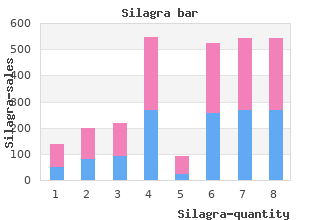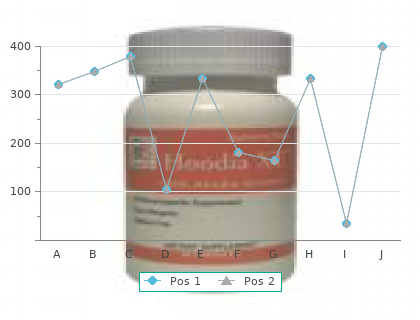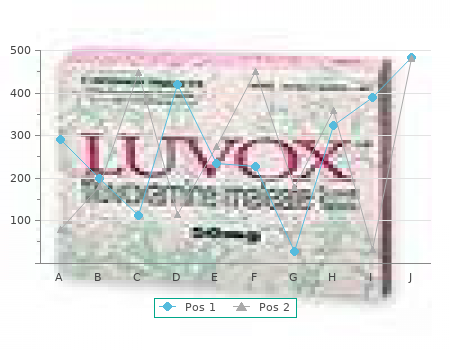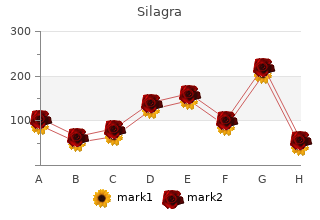Silagra
2018, Metropolitan State University, Yugul's review: "Silagra 100 mg, 50 mg. Only $0,58 per pill. Quality Silagra OTC.".
The impacts of such displace- ment are potentially either positive or negative generic 50mg silagra with visa erectile dysfunction after testosterone treatment, depending on exactly what the replacement drug or activity is order silagra 100 mg otc erectile dysfunction icd 9 code 2012. Displacement can also take place towards riskier but more cost-effective methods of administration, such as injecting. Of course, it should also be noted that policy-making can attempt to encourage positive displace- ment (see below). User choice of licit or illicit supply will be determined by a complex interplay of variables, not just relative prices, making generalisa- tions diffcult. Future pricing policy decisions will have to be based on the cautious testing of different pricing regimes and their impacts on various indicators amongst different populations—an ongoing system for outcome evaluation necessarily built into any regulatory infrastructure. Interventions on price are a particularly useful policy tool, as once a price control infrastructure is established it allows for relatively rapid responses to changing circumstances and emerging problems. Price controls are highly fexible and can potentially be targeted at specifc products, populations of users, types of outlets or geographical regions associated with particular concerns. Differential application of such 44 4 5 6 Making a regulated system happen Regulated drug markets in practice Appendices price controls can also contribute to an incentive-disincentive gradient that can help encourage more responsible using behaviours and the use of lower risk products. Whilst there is a need to be cautious in generalising between drugs, the range of experiences with alcohol and tobacco policy provides a useful starting point to inform drug pricing policy more generally. As well as demonstrating where policy may be effective it needs to be acknowledged that political issues continue to cloud government price interventions on both of these drugs; the potential to generate substan- tial tax revenue may negatively impact on government public health priorities (which would generally aim to moderate use and thus reduce revenue), whilst the public unpopularity of increasing taxes, the lobbying power of the production and supply industries, and employ- ment of potential voters within the respective production and supply industries are also important political considerations. The occasionally mooted idea that tax revenue from drugs could be redirected into drug services (prevention, education and treatment/ recovery) is one that has a certain populist appeal, but is not useful beyond the broadest of cost beneft considerations. Service provision should be determined by need and evidence of effcacy, not by the whims of tax revenue generation. Examples include blister packs, sealed ampoules, and other forms of sealed containers, such as ‘pop top’ lids on foods. Where appropriate an additional requirement could be made for commercial or domestic storage in sealed/locked cabinets. Contents and prominence of packaging information should be determined by the appropriate public health authority and be legally enforced. Information should include: * Contents: clearly stated—both technical names and terms in popular usage. These guidelines apply for offsite sale or supply, and will need some level of fexibility. For example, following the model of some prescription or over the counter drugs, certain product and packaging formats might demand a summary of key information, or a single prominent warning, on one packaging component (e. This would be supported by a paper insert giving more detailed product information. Where drugs are supplied for on-site use, supervised use, or use by licensed individuals, different regulations may apply, including on-site, clearly visible provision of the relevant information. This would not necessarily be available on the product itself, which may be provided without packaging in some scenarios. The resultant packs would be modelled on current medical drug packaging, 17 or plain packaging models proposed for tobacco. Clear guidelines for such controls should be mandated by the appropriate public health authority and enforced by the relevant authorities as part of licensing conditions. These authorities should also defne and manage any on- or in-pack health and safety messaging. This could be managed through print, digital tagging or bar-codes, or through some combination of all three. It would emphasise that the product is for use by the named individual only, and that they are directly responsible for it and its use. Product tagging could be linked to sanctions, such as loss of purchaser licence, if the product ends up in the hands of a third party. Licensed individuals or companies could be subject to a hierarchy of penalties for violations, including fnes, loss of licence, or other appropriate civil or criminal sanctions. As described above, in chapter 2, Five models for regulating drug supply, requirements for individual vendors to have specialist training, and/or experience, and abide by a legally mandated code of conduct, can be threaded through all licensed sales models. Such advertising and promotion could easily drive a similar expansion in psychoactive drug usage. Therefore, the default position of any licensing regime should be a complete ban on all advertising, promotion or marketing of all drugs, with any exceptions made only Unacceptable drug marketing: 1950s cigarette advertising 48 4 5 6 Making a regulated system happen Regulated drug markets in practice Appendices on a cautious case by case basis by the relevant authorities. A default ban should also exist on political donations from any commercial opera- tors in the drugs market.


No formal studies were conducted to examine the effects of either renal or hepatic impairment on the pharmacokinetics of rituximab purchase silagra 50mg erectile dysfunction vitamin e. Patients with tumor masses > 10 cm or with > 5000 lymphocytes/µL in the peripheral blood were excluded from the study silagra 50 mg visa erectile dysfunction high cholesterol. Disease-related signs and symptoms (including B-symptoms) resolved in 64% (25/39) of those patients with such symptoms at study entry. Study 3 2 In a multicenter, single-arm study, 60 patients received 375 mg/m of Rituxan weekly for 4 doses. Table 4 Summary of Rituxan Efficacy Data by Schedule and Clinical Setting Study 1 and Study 3 Study 3 Study 1 Study 2 Bulky disease, Retreatment, Weekly×4 Weekly×8 Weekly×4 Weekly×4 a N=166 N=37 N=39 N=60 Overall Response Rate 48% 57% 36% 38% Complete Response Rate 6% 14% 3% 10% b, c, Median Duration of Response 11. Patients were randomized to Rituxan as single-agent maintenance therapy, 2 375 mg/m every 8 weeks for up to 12 doses or to observation. Patients were randomized (1:1) to receive Rituxan, 375 mg/m intravenous infusion, once weekly for 4 doses every 6 months for up to 16 doses or no further therapeutic intervention. The main outcome measure of the study was progression-free survival defined as the time from randomization to progression, relapse, or death. There was a reduction in the risk of progression, relapse, or death (hazard ratio estimate in the range of 0. The main outcome measure of the study was progression-free survival, defined as the time from randomization to the first of progression, relapse, or death. Responding patients underwent a second randomization to receive Rituxan or no further therapy. These results reflect a statistical approach which allows for an evaluation of Rituxan administered in the induction setting that excludes any potential impact of Rituxan given after the second randomization. The main outcome measure of the study was event-free survival, defined as the time from randomization to relapse, progression, change in therapy, or death from any cause. The main outcome measure of the study was time to treatment failure, defined as time from randomization to the earliest of progressive disease, failure to achieve a complete response, relapse, or death. Patients with clinically significant cardiovascular disease were excluded from the study. Patients were eligible for a 90-minute infusion at Cycle 2 if they did not experience a Grade 3 3-4 infusion-related adverse event with Cycle 1 and had a circulating lymphocyte count < 5000/mm before Cycle 2. All patients were pre-medicated with acetaminophen and an antihistamine and received the glucocorticoid component of their chemotherapy prior to Rituxan infusion. The main outcome measure was the development of Grade 3-4 infusion-related reactions on the day of, or day after, the 90-minute infusion at Cycle 2 [See Adverse Reactions (6. Eligible patients received their Cycle 2 rituximab infusion over 90 minutes as follows: 20% of the total dose given in the first 30 minutes and the remaining 80% of the total dose given over the next 60 minutes [See Dosage and Administration (2. Patients who tolerated the 90-minute rituximab infusion at Cycle 2 continued to receive subsequent rituximab infusions at the 90-minute infusion rate for the remainder of the treatment regimen (through Cycle 6 or Cycle 8). The investigator assessed results in Study 12 were supportive of those obtained by the independent review committee. Across both studies, 243 of 676 Rituxan-treated patients (36%) were 65 years of age or older and 100 Rituxan-treated patients (15%) were 70 years of age or older. The results of exploratory subset analyses in elderly patients are presented in Table 8. In addition to the intravenous premedication, glucocorticoids were administered orally on a tapering schedule from baseline through Day 14. A similar proportion of patients achieved these responses through Week 24 after a single course of treatment (2 infusions) with Rituxan. Patients received a first course of two infusions of rituximab or placebo on Days 1 and 15. After a minimum of 24 weeks, patients with ongoing disease activity were eligible to receive re-treatment with additional courses of their assigned treatment. Ninety-six (49%) of patients had new disease and 101 (51%) of patients had relapsing disease.

Monitoring and follow up Inpatient Vital signs-neurological deterioration silagra 100 mg generic impotence doctor, Temperature order silagra 50mg with amex erectile dysfunction causes lower back pain, Respiratory rate Blood glucose 2hourly, urine ketones 4 hourly Outpatient • Blood glucose-personal glucometers, • Hyperglycemia-shown by frequent micturation at night , • Urine glucose, • Glycaemic control –glycosylated Haemoglobin-(Ranges)(HbA1c), • Growth (Height and weight) every visit , • Complications, • Hypoglycaemia-management , • Continuous diabetes education-every visit Surgery Minor surgery(duration < 3h. Primary Causes: Iodine deficiency Congenital Drugs; Iodine excess (contrasts media containing iodine), lithium, antithyroid drugs, p- aminosalisylic acid, interferon alfa and other cytokines, aminoglutethimide. Others are cool peripheral extremities, puffy face, hands and feet (Myxedema), diffused alopecia (hair loss), bradycardia, peripheral odema, delayed tendon reflex relaxation, carpal tunnel syndrome and serous cavity effusions. Diseases of the thyroid gland are manifested by qualitative or quantitative alterations in hormone secretion or enlargement of the thyroid gland or both. Enlargement of the thyroid gland may result in normal increased, or decreased hormone secretion. Treatment Iodised salt may not provide sufficient iodine and should therefore not be prescribed alone Lugol’s solution is too concentrated for daily use, and should be diluted by a factor of 30 to give 4. Treatment Age less than 45 years First choice B: Schiller’s iodine 2 drops (460 micrograms) once daily for one year. Response may be obtained within 6 months Second choice B: Lugol’s solution 3 drops (21mg) once each month for up to one year. Post thyroidectomy Iodine should be given daily indefinitely to prevent recurrence, following dosing schedule give above Physiological doses of iodine can be given even in pregnancy. It is actually necessary to provide the therapy to avoid iodine deficiency to the foetus Patients should continue taking iodized salt indefinitely (Ref. National Policy on Nutrition) after the completion of treatment or begin giving 1 drop (7mg) at Lugol’s sol per month. It is usually due to diffuse hyperplasia and hypertrophy of the thyroid gland (Graves’ disease). Hyperthyroidism is characterized by an increased metabolic rate, which causes weight loss, increased appetite, fatigue, emotional disturbances, heat intolerance, sweating, muscle weakness and diarrhea. Treatment Graves’ disease: 241 | P a g e C: Carbimazole 40mg (O) once daily for 3 weeks then 20mg daily for 3 weeks. Maintenance dose 5mg for up to one year Toxic Nodular Goitre Can be treated with antithyroid drugs and surgery or radio-iodine C: Carbimazole 40mg (O) once daily for 3 weeks then 20mg daily for 3 weeks. Iron deficiency is mainly due to blood loss secondary to haemorrhage, malabsoption and hookworm infections. Iron deficiency anaemia A: Ferrous sulphate200 mg (O) every 8 hours Children5 mg/kg body weight every 8 hours. Pyruvate kinase deficiency c) Haemoglobin -Abnormal haemoglobin such as HbS, C, Unstable Hb Clinical features The disease may occur at any age and sex Patient may present with symptom and features of Anaemia Symptoms are usually slow in onset however rapidly developing anaemia can occur Splenomegaly is common but no always observed Jaundice Treatment i. Immunosuppressive drugs for the patients who fail to respond to corticosteroids and splenectomy. Symptoms may include anaemia, dactylitis, recurrent infections, impaired growth and development. Crises Three distinct types of crises develop in patients with sickle cell disease Vaso-occlusive or painful crises are more common occurring with a frequency from almost daily to yearly. It is important to distinguish between painful crises and pain caused by another process Aplastic crises occurs when erythropoiesis is suppressed Sequestration crises occurs in children or occasional in adult with an enlarged spleen due to massive pooling of red cells in the spleen Treatment Guidelines Nonspecific measures A: Folic acid 5mg once daily Specific measures S: Hydroxyurea 15mg/kg/day. Maximum dose: 35mg/kg Management of Complication Patients undergoing vascular crises should be kept warm and given adequate hydration and pain control (Inj pethedine 100mg 6hrly, Oral morphine 5mg/kg) and oxygen Acute chest syndrome is a life threatening complication and empiric antibiotics should be given. Usually asymptomatic but liable to haemolysis if incriminated drugs or foods are taken (e. Treatment Guidelines Avoid incriminated agents/foods or drugs Transfusion of packed red blood cells in severe anaemia. Most frequent haemorrhage involves joints or muscles and bleeding parttens differ with age: Infants usually bleed into soft tissues ar from the mouth but as the boy grows, characterist joint bleeding becomes more common. Frequent spontaneous haemarthrosis factor is needed several times Moderate 2-5%of normal 1Haemorrhage secondary 0. Patients present with a history of easy bruising, menorrhagea, gum bleeding and spontaneous joint bleeding in severe form.

Silagra
10 of 10 - Review by I. Bernado
Votes: 119 votes
Total customer reviews: 119 |



